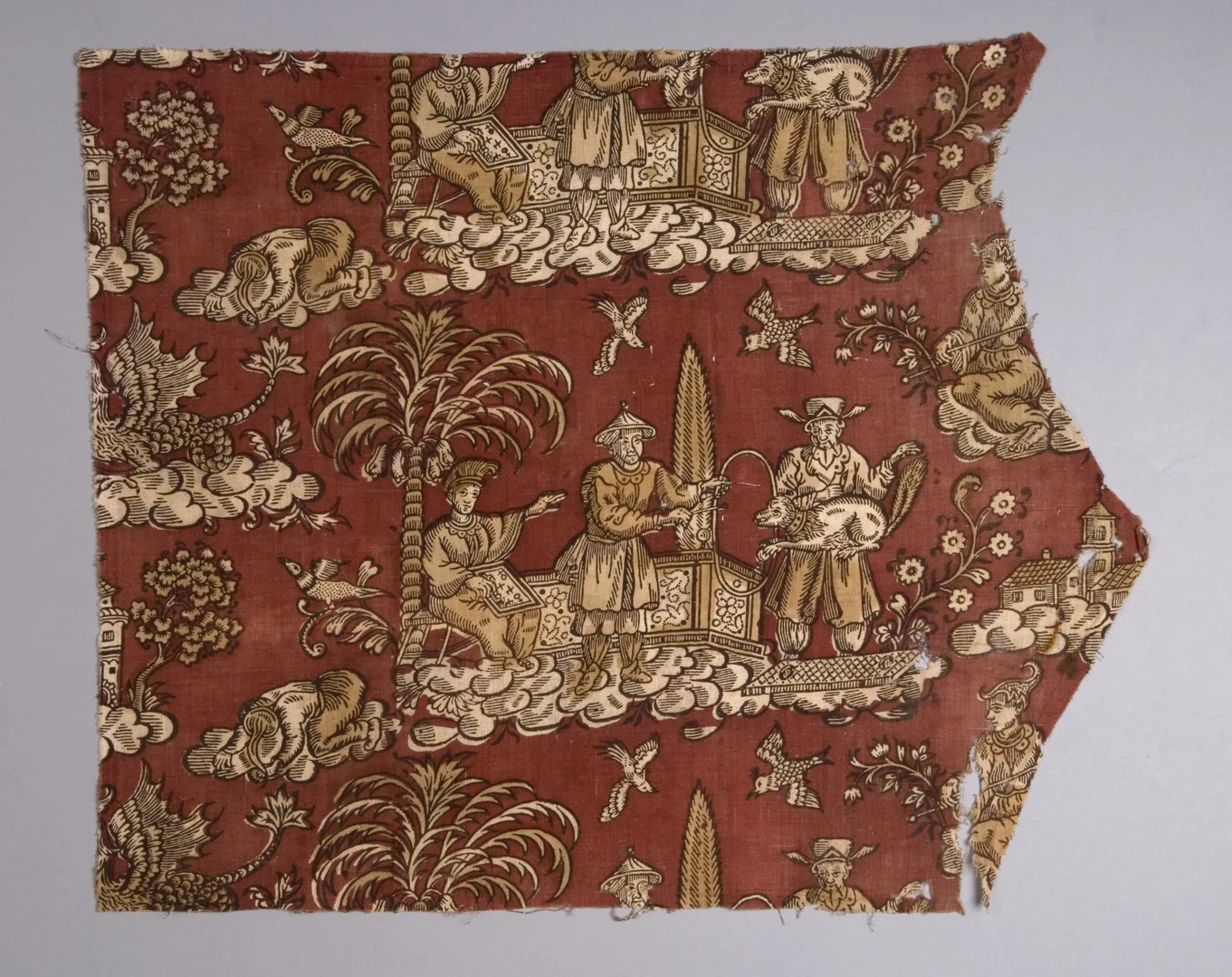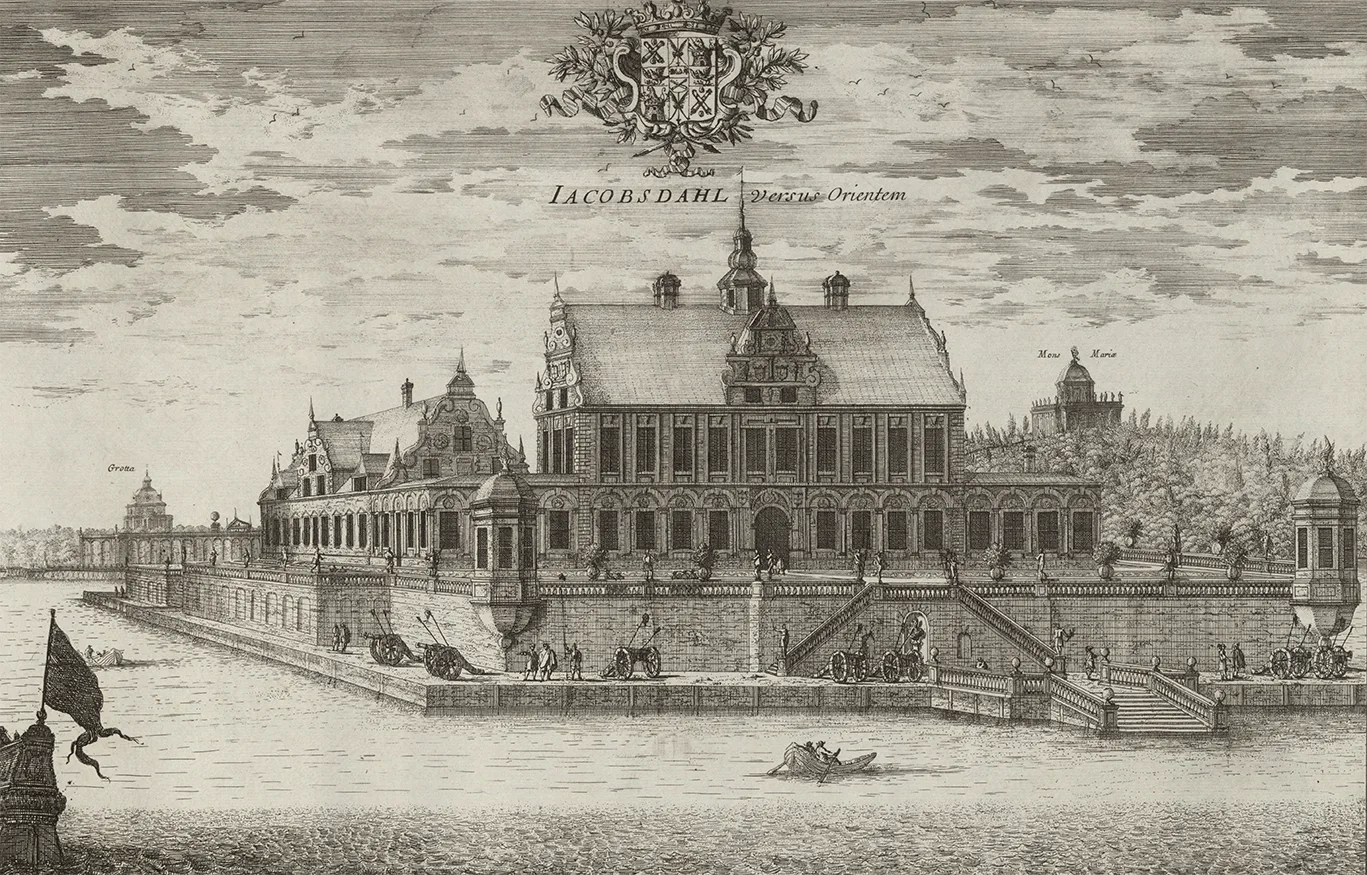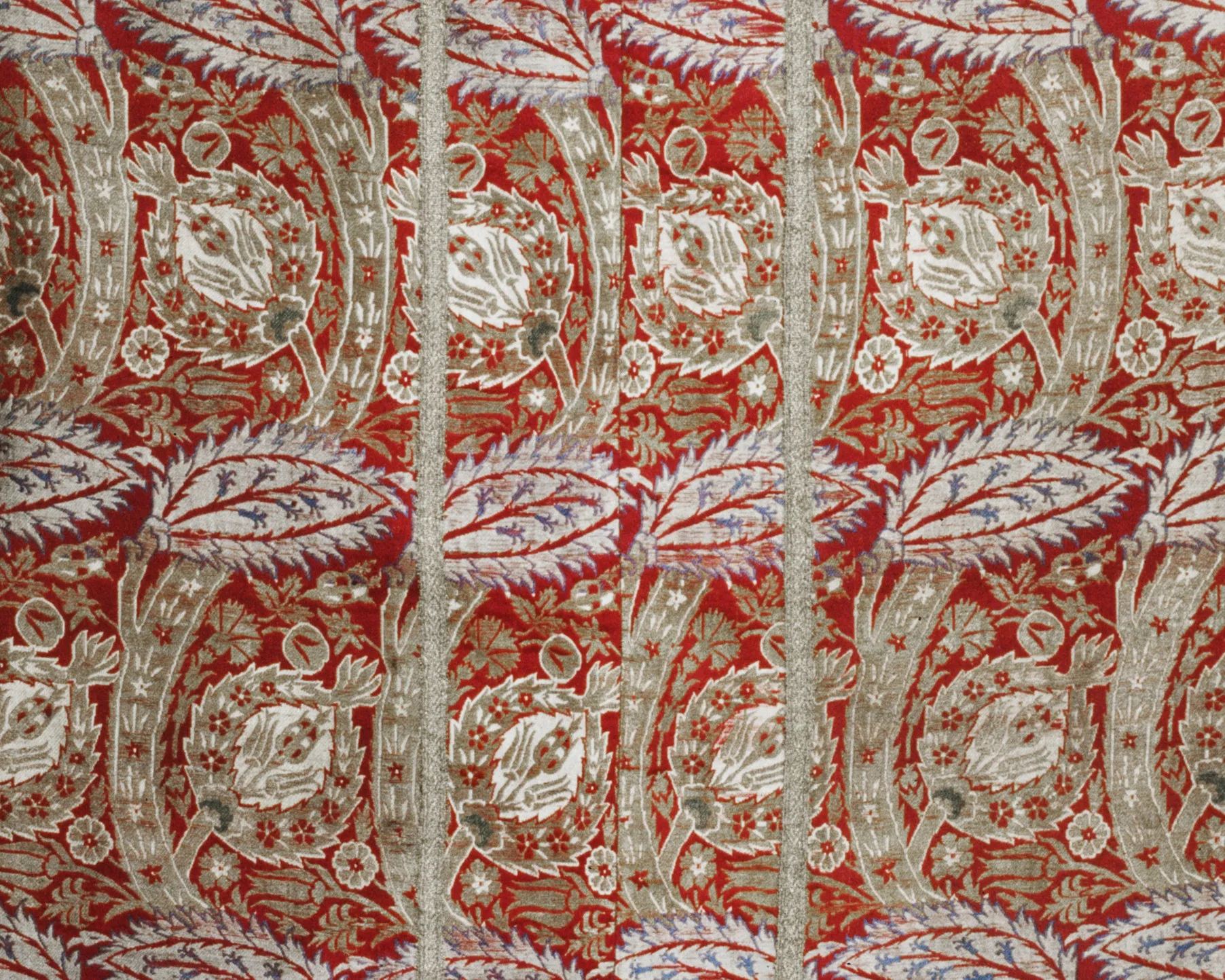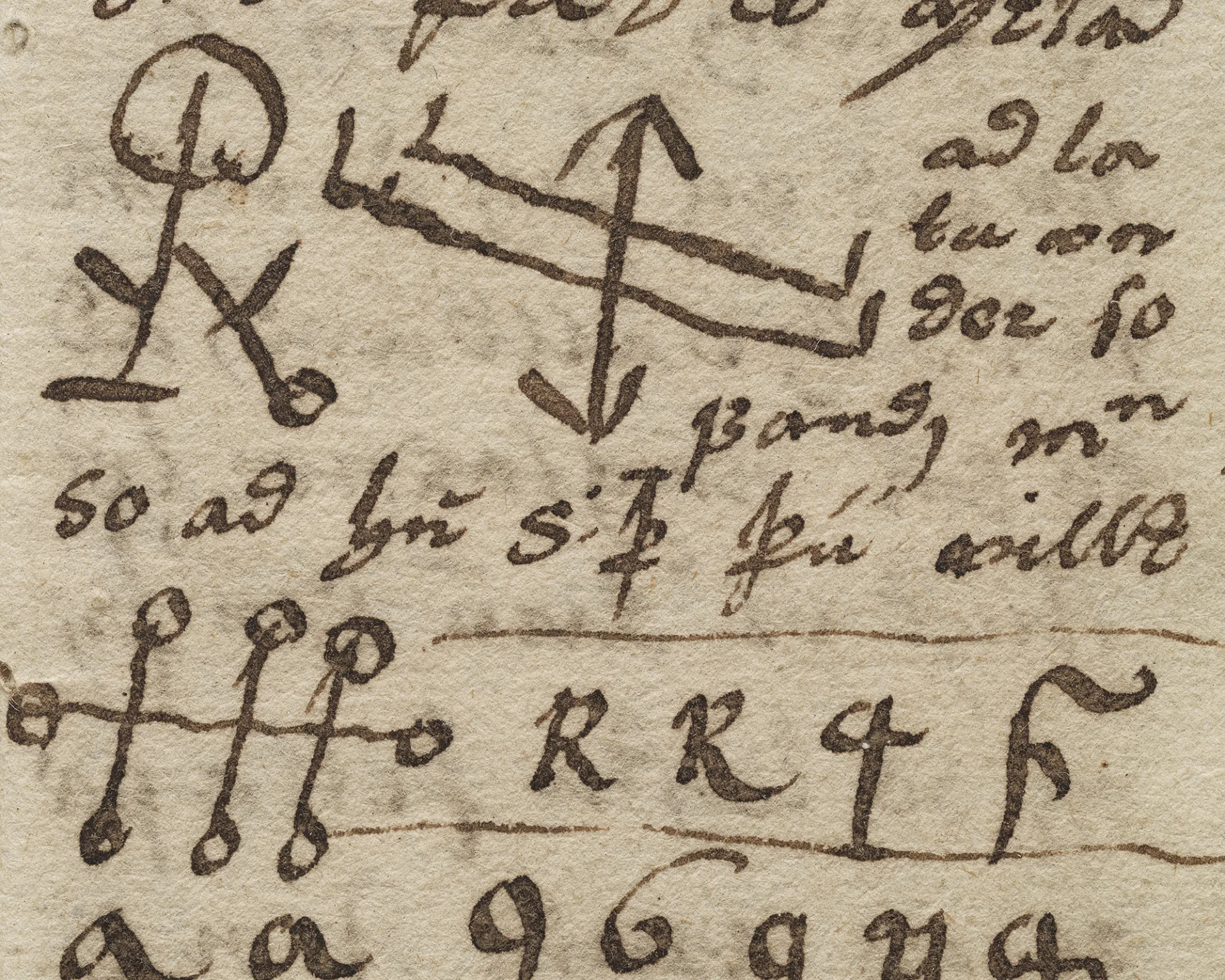Reused Textiles in a Chasuble
Viking Age
AD 800 – AD 1100
Middle Ages
AD 1050 – AD 1520
Modern Age
AD 1520 – AD 2025
The most distinguished and symbolically significant garment worn by priests in church is the chasuble. It is worn during the celebration of the Mass, that is, when Holy Communion is administered. One could say it is the Church’s ultimate ceremonial garment. The collection at the Swedish History Museum includes, among other things, a chasuble from Bärbo Church in Södermanland, whose lining is made from repurposed material. The chasuble itself is made of violet silk velvet with a vegetal embroidery in silver thread and scattered silver sequins. On the front is a decorative band, and on the back a cross made of bobbin-lace gold trim.

Chasuble
It is likely that the reused textile dates from the 17th century. It may originally have served another purpose at one of the local manor houses, perhaps as a bed hanging.
The lining of the chasuble consists of several pieces of fabric. Whether it was originally made this way or repaired later is unclear. One of the fabrics is pink silk, and the other is a printed calico. The word calico reveals something about the fabric’s quality. It is derived from the French coton, meaning cotton.

Calico print
On view at Historiska museet in the exhibition Sveriges historia
The fabric bears a printed pattern with Chinese figures. Against a red background, small islands of motifs emerge. In the largest scene, a dog is shown leaping through a hoop while three men look on. The smaller scene features a seated man with a lance and a winged dragon.

Calico print
The Chinese-style motifs might suggest that the fabric was made in China, but that is not the case. In the 18th century, when this fabric was produced, Europe had close trade ties with China. In addition to importing goods, European designers were also inspired by Chinese artistic styles, and fabrics like this were printed in Europe.
The calico print, like the chasuble’s outer fabric, may well have once formed part of an interior furnishing in a castle or manor. Around the mid-18th century, it was fashionable to decorate rooms with textile wall hangings made of printed calico.






